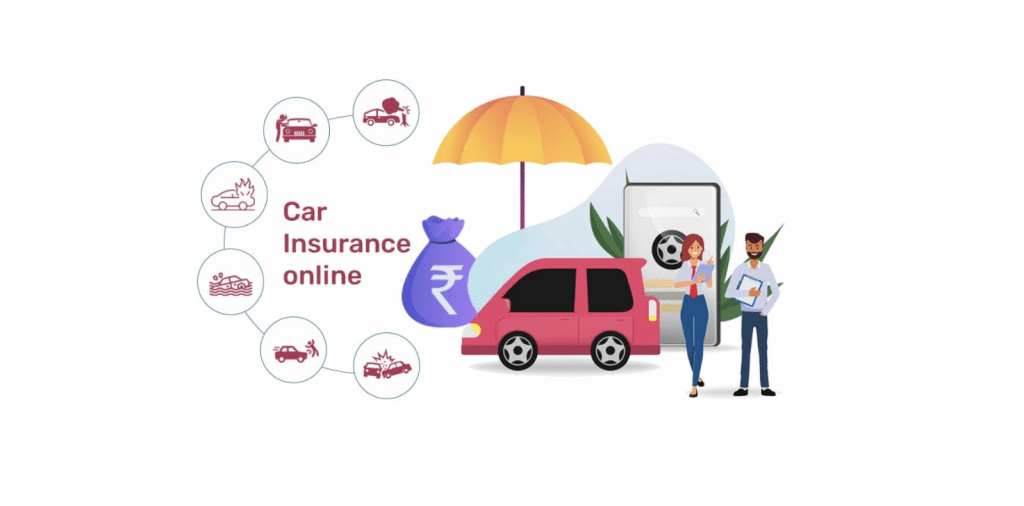Introduction:
In the modern digital age, purchasing car insurance online has become the preferred method for many consumers due to its convenience and accessibility. The process allows individuals to compare policies from various insurance providers, obtain competitive quotes, and secure coverage that best suits their specific needs. In this comprehensive guide, we will walk you through the step-by-step process of buying car insurance online, empowering you to make informed decisions and find the most suitable policy for your vehicle.
Step 1: Assess Your Insurance Needs
Before diving into the online car insurance market , It is important to evaluate your insurance requirements carefully. This includes considering the make, model, age, and usage of your vehicle, as well as your driving history and personal situation. By understanding your needs, you can narrow down your policy choices and choose the coverage that provides the most effective protection.
Step 2: Gather Necessary Information
To streamline the online car insurance buying process, gather all the necessary information beforehand. You’ll typically need details like your driver’s license, vehicle registration, previous insurance history, and any other relevant personal information. Having this information at hand will facilitate the completion of application forms and ensure accurate quotes.
Step 3: Research Insurance Providers
Start by researching reputable insurance providers that offer coverage in your region and compare vehicle policies. Look for companies with a solid track record of customer satisfaction, financial stability, and a wide range of coverage options. Online reviews and ratings can provide valuable insights into an insurer’s reputation and reliability.
Step 4: Utilize Comparison Websites
Comparison websites are valuable tools for comparing car insurance quotes from multiple providers in one place. Enter your vehicle and personal details, and the website will generate a list of policy options, along with their respective premiums, deductibles, and coverage limits. These comparisons will enable you to make well-informed decisions.
Step 5: Read Policy Details Carefully
When reviewing the quotes obtained from comparison websites or individual insurance providers, pay close attention to policy details. Thoroughly read the coverage inclusions and exclusions, policy limits, and any additional benefits or perks offered. Understand the terms and conditions to avoid any surprises in the future.
Step 6: Check for Discounts
Insurance companies provide discounts that can help you lower your premium. Some common discounts are safe driver discounts, multi-policy discounts (when you bundle car insurance with other policies), low-mileage discounts, and discounts for installing anti-theft devices or safety features in your vehicle. You should ask about these discounts to take advantage of potential savings.
Step 7: Contact Insurance Companies Directly
Although comparison websites are helpful, it’s beneficial to directly contact insurance companies as well. Speak with their representatives to ask any specific questions, clarify policy details, and discuss potential discounts that might not be listed online.
Step 8: Understand Your State’s Insurance Requirements
Each state has specific minimum car insurance requirements. Ensure that the policy you select meets or exceeds these requirements to comply with the law. Failing to meet the minimum coverage mandates can result in fines or legal consequences.
Step 9: Review the Insurance Company’s Financial Strength
Before finalizing your decision, assess the financial strength of the insurance companies you are considering. Independent rating agencies, such as A.M. Best or Standard & Poor’s, provide financial strength ratings for insurers. Choosing a financially stable company ensures that they will be able to fulfill their obligations in the event of a claim.
Step 10: Complete the Online Application
Once you’ve narrowed down your choices, complete the online application form accurately. Double-check all information for accuracy and make any necessary corrections. Submit the application only when you are confident that the details provided are correct.
Step 11: Review the Policy Before Making Payment
After submitting the application, review the policy documents provided by the insurance company. Pay close attention to the policy’s coverage, terms, and any applicable endorsements. Ensure that all the information aligns with what you discussed during the application process.
Step 12: Make Secure Online Payment
If everything looks satisfactory, proceed with making the secure online payment to activate your car insurance policy. Ensure that you receive a confirmation of the payment and policy issuance. Save digital copies of the policy documents for future reference.
Conclusion:
Buying car insurance online offers numerous advantages, including convenience, a wide range of options, and the ability to compare quotes easily. By following this comprehensive guide, you can confidently navigate the online car insurance market and make informed decisions that suit your unique requirements. Remember to regularly review your policy and adjust coverage as needed to ensure you have adequate protection on the road. Happy car insurance shopping!
